All about the cuisine of Montenegro

The further we go on vacation from home, the more we want to learn and try everything new - these are beaches and ski slopes, local attractions and traditions, fashion and, of course, cuisine. Remember yourself: tourists almost always choose excursions to original villages and restaurants of national cuisine in order to breathe in local flavors, taste food and drinks, try to understand the country and the people who allowed them to touch their culture. And Montenegro, fortunately, is no exception. Let's get to know the cuisine of this country as soon as possible!

Peculiarities
Montenegro's cuisine will certainly delight those for whom food is a delight. It will doubly delight those who like to eat a lot, because food is put on the plates here without regret, and the food is hearty. Many tourists take one portion for 2-3 people in restaurants and cafes. Montenegrins are meat lovers, and the further into the mountains, the more meat and cheese. On the coast, guests will be served fish dishes, but this, unfortunately, is an expensive pleasure not only for tourists, but also for the Montenegrins themselves, because there is no industrial fishing here.

Those who prefer proper nutrition will not go hungry either - after all it is a southern country where a large number of vegetables and fruits are grown. Of course, what about a mountainous country without natural cheese and fermented milk products with hot flatbread or bread just out of the oven.
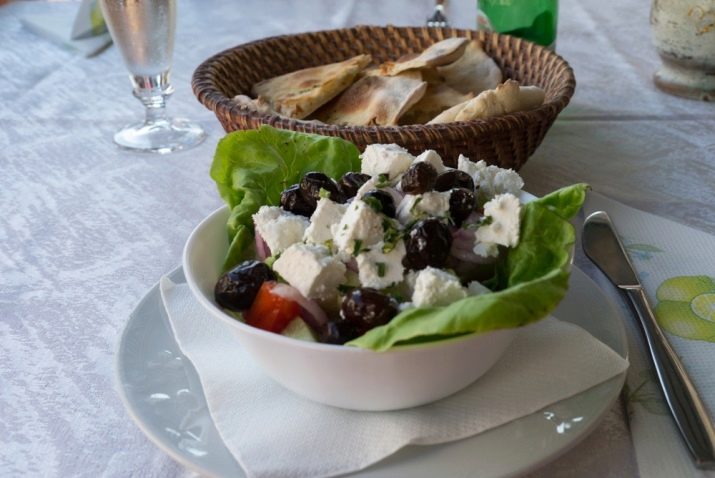
The beauty of this kitchen lies in its variety: many dishes of the former Yugoslavia are similar to the cuisine of neighboring countries (Turkey and Albania, Italy and Austria, Hungary).And since this is a mixture of east and west, the menu in hotel restaurants and street stalls will be very diverse.
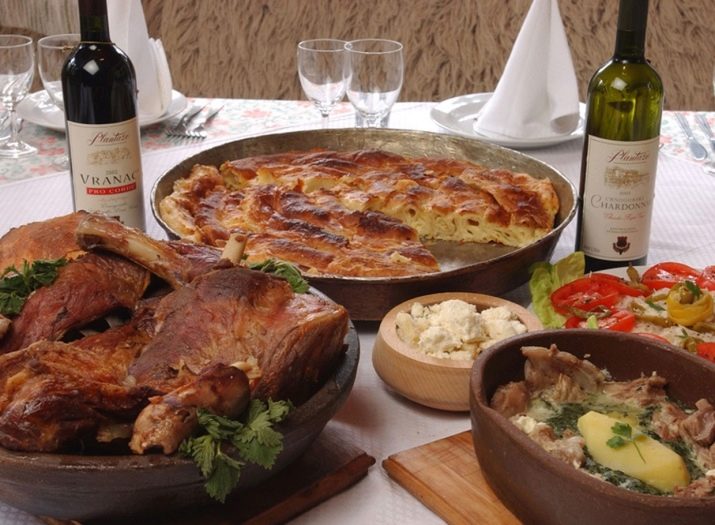
The southern spices with completely organic local produce have yielded stunningly delicious meals.
There are few industrial enterprises in the country (and they are located far from tourist routes), they try to grow plants without the use of chemicals. But the meat is bought in Serbia, where animals grow in natural conditions. Result: it makes no sense for farmers to use genetically modified feed for animals and plants, so the food is natural and very tasty.
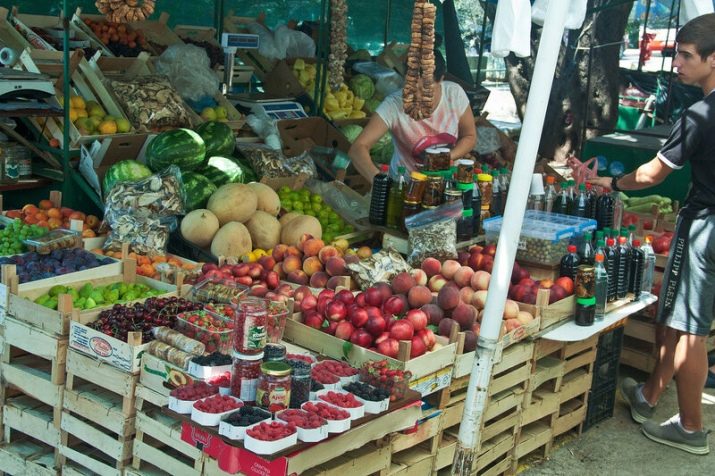
In addition, Montenegrins are a very hospitable people who treat their guests with pleasure. Including local wine, which is customary to wash down any hot dish and cheeses.
Each community (region) has its own culinary secrets, so the names of the towns are often included in the names of dishes: brewed tsrmnitsko, podgoritsky trout, Negush steak. To taste homemade national food, go to local taverns - konoba.
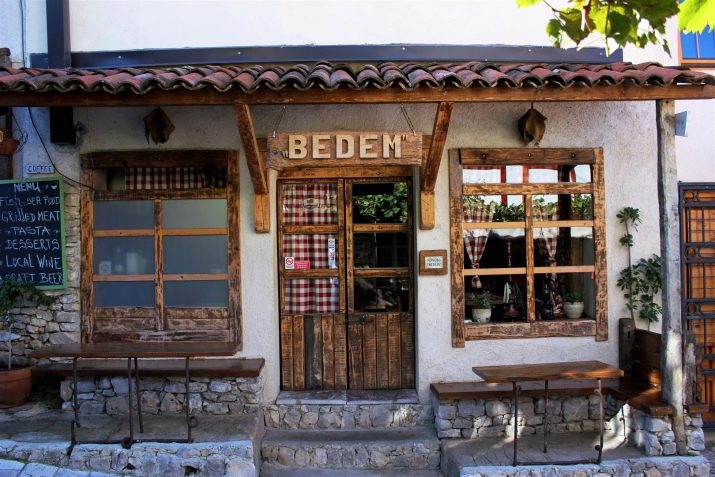
Another feature of the Montenegrin cuisine, which is rather related to work in the tourism business, is the preference for simple dishes with a small amount of fat and spices. Here they fry a little in oil (as in oriental cuisine), stew much more, bake on coals or roast over an open fire.
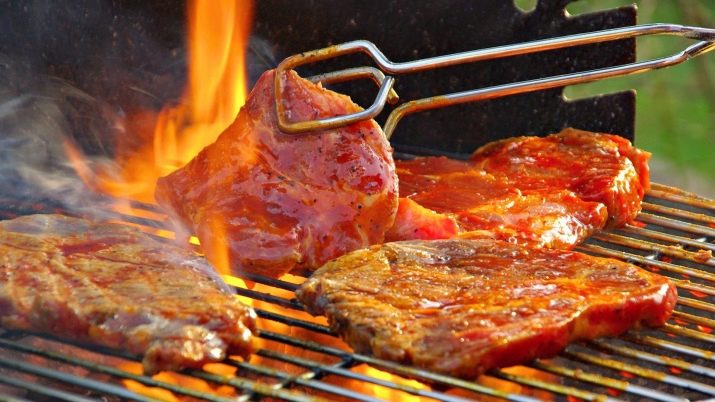
Montenegrins have a dish - an aperitif meze - a cut of different meats, cheeses and olives. A dish with slices of boiled eggs and pickled cucumbers is placed next to it. And if the guests have satisfied the first hunger, then it's time to serve the first.
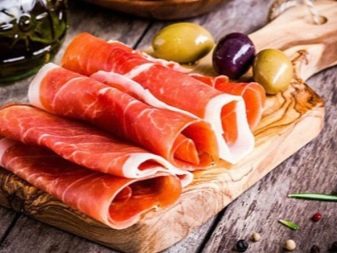
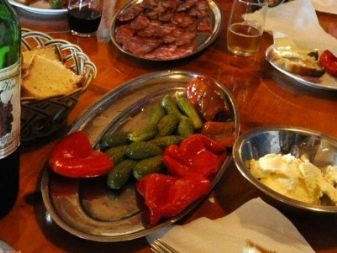
Main national first courses
Liquid hot dishes are loved in Montenegro, as in all Slavic countries. There are two varieties of the first: soup and chorba. Soup is called a transparent broth with the addition of meat, which is seasoned with noodles, vegetables, rice. Seafood soup is even lighter than meat soup. They cook it on the coast.

Chorba is a thick, rich meat or fish soup. It is similar to Hungarian goulash in its density. If you come across the following names in the menu, then know what they mean:
- chorba od povrcha - broth with vegetables;
- chorba od kopriva - soup with nettle in chicken broth or vegetarian;
- pilecha chorba - the first on chicken meat;
- goveja chorba - rich broth with beef and vegetables, but no potatoes;
- riblya chorba - a fish first course, it is prepared from several types of fish, seasoned with flour for density and sparing hot spices.
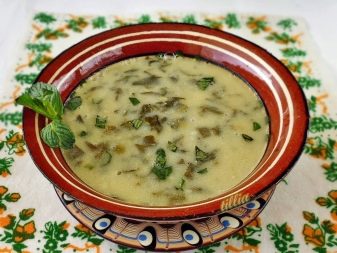
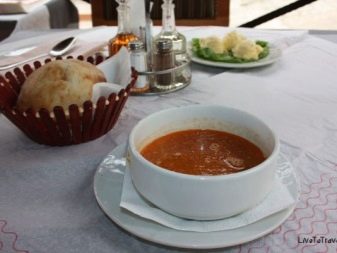
This ear is the most popular among tourists. The difference from our light dish is that it is exactly a thick chorba with hot pepper, paprika and tomato sauce.
What is served for the second?
The second is traditionally understood as a hot dish. But Montenegro is also famous for its appetizers and salads. But porridge is not very popular. However, tsitsvara, a puree made from cornmeal and young cheese, is often served for breakfast. Tsitsvara is washed down with milk or yogurt, or eaten with a bite of potatoes.

The second version of the traditional breakfast is steam: stale bread is soaked in milk with the addition of butter and young cheese. A rustic hearty dish is eaten with yogurt.
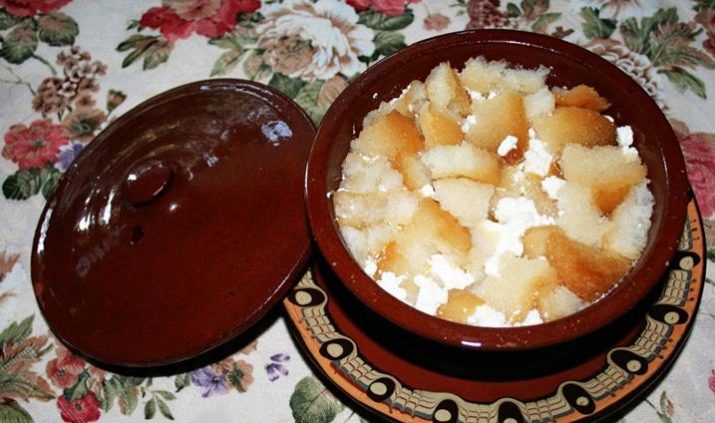
A distinctive feature of Montenegrin salads is that all the ingredients are coarsely chopped, and everything is served in large quantities.
As for the appetizers, the main dish is prsut - a visiting card of Montenegro. This is an analogue of jamon, which can be bought at any store. It is prosciutto in a vacuum package that guests of the country take home as a gift. In the Montenegrin village of Njegushi, the original recipes for smoking and drying ham (pork or, much less often, beef) have been preserved. It takes 4-24 months from the beginning of production to full readiness. The longer the prosciutto is kept, the more expensive it is. Cured meats must be used for meze, a separate snack, or as an ingredient in other dishes.

But other meat dishes are no less popular:
- taking from Mlieku - lamb stewed in milk;
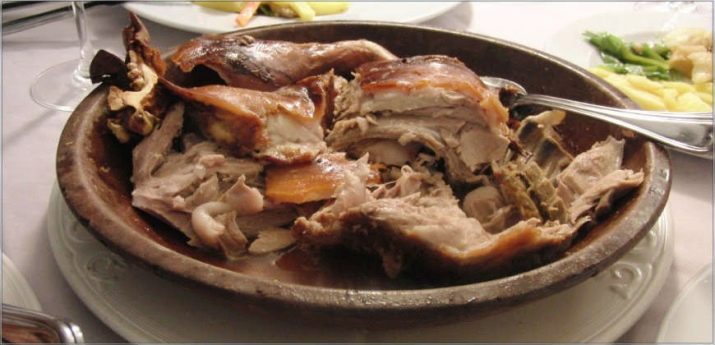
- hanger - this is a chop in which cheese and prosciutto are wrapped;

- messed up - This is an assortment of grilled meat dishes, which is usually offered in hotel restaurants;
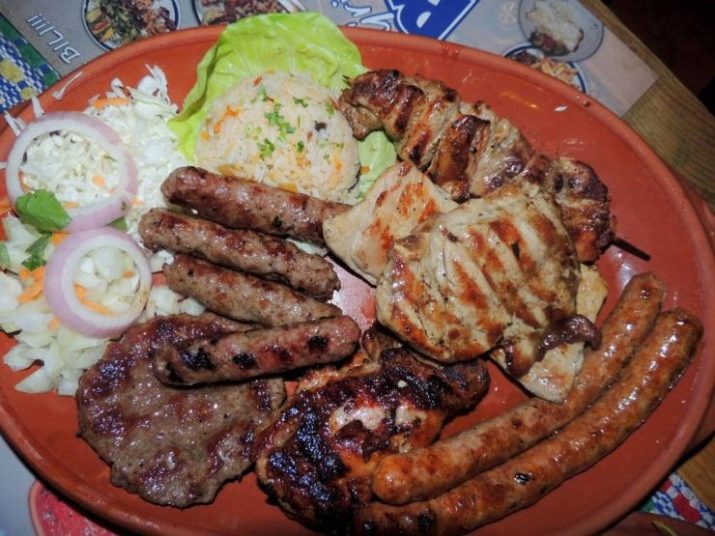
- muffin - pork, which was first fried over an open fire and then stewed with vegetables;

- Negush steak - beef steak, in which prosciutto and Kaymak cheese are wrapped;
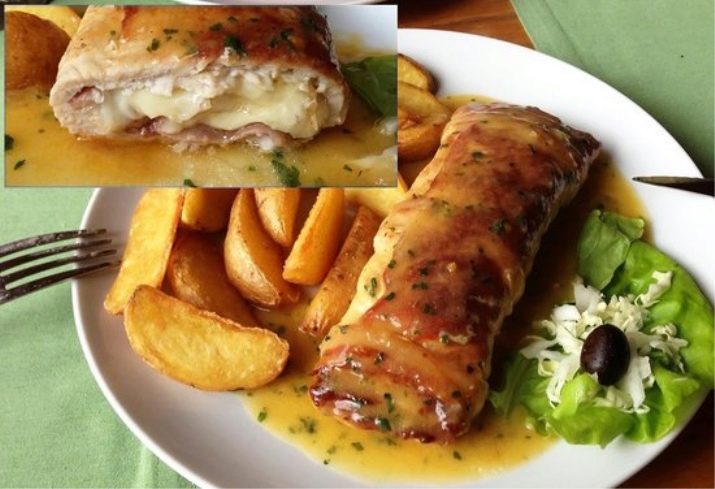
- pashticada - stew in sauce mixed with dumplings or pasta;
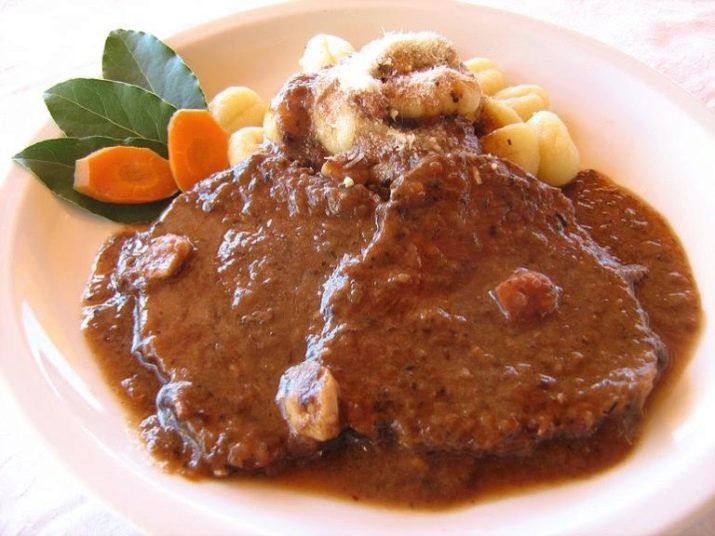
- biscuits - meat fried on a spit;

- pleskavitsa - a flat cutlet with a diameter of 20 cm, which is made only from meat and onions, and it is fried without breading;
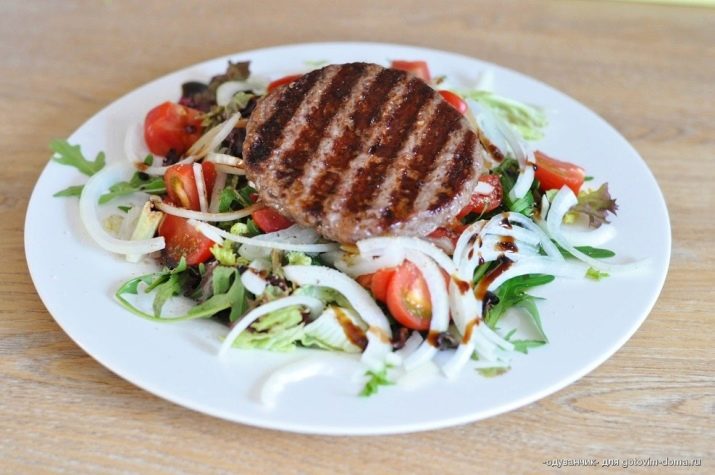
- razhnichi - small beef or pork shashlik;

- sarma - very small cabbage rolls;

- chevapchichi (chevapi) - grilled sausages made from a finely chopped mixture of lamb and veal;
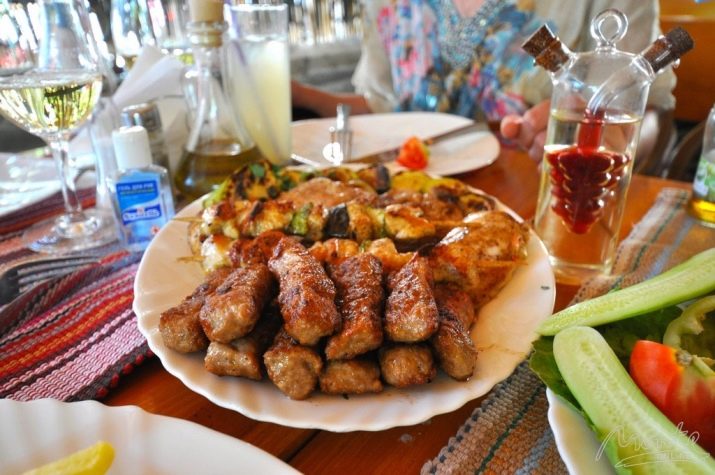
- Montenegrin pork schnitzel - these are meat tubes with Kaimak, which are breaded with flour, eggs, and then breadcrumbs, and fried;
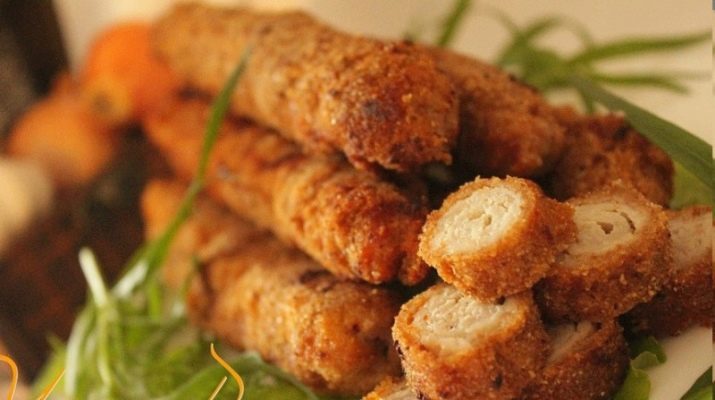
- lamb from under the sac - one of the specialties of Montenegro, which is cooked in a sacha (cast-iron pot) for 3-6 hours.
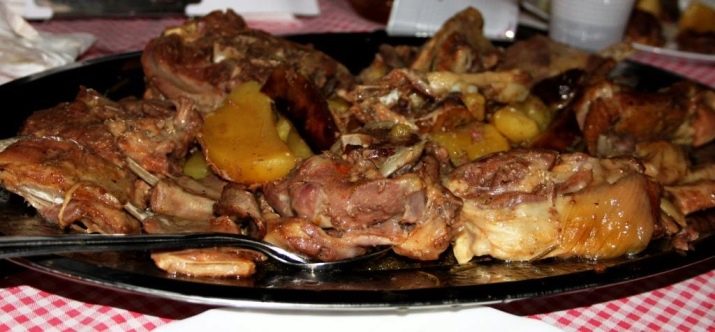
Fish and seafood are also very popular with tourists, although they are expensive. But the closer to the south of the country, the more chances you have to taste oysters and shrimps, squids and mussels - here prices are much lower. You can cook your own meals from a freshly purchased catch, or you can visit a fish restaurant or an outdoor tent. In any case, it will be incredibly tasty, especially with the local white wine "Krstach". The most popular and famous are the following delicacies:
- dalmatian goulash - several varieties of fish stewed with tomato sauce and spices;
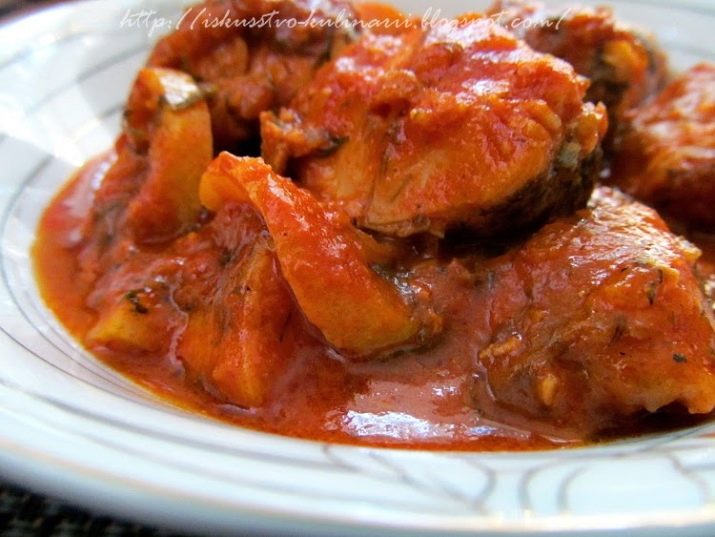
- Skadar carp - fish caught in Lake Skadar and baked in a pan using prune sauce with the addition of apples or quince; as it cooks, the sauce turns into jelly;
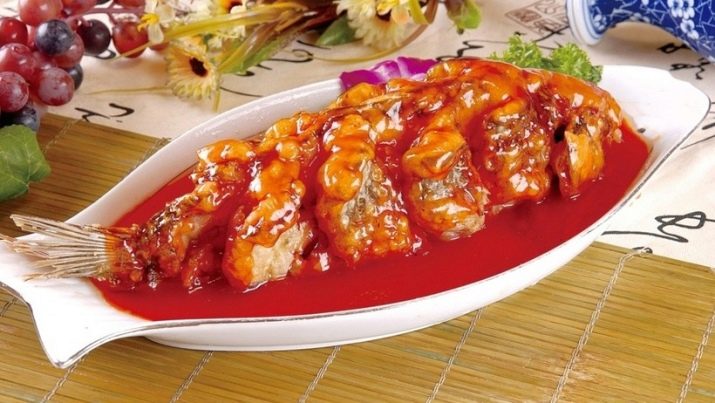
- mussels with fresh crunchy bread - served with white or red Buzara sauce;
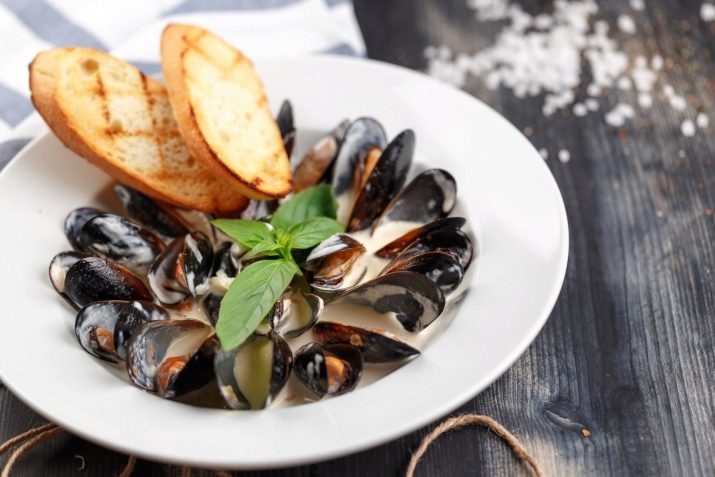
- octopus, grilled;
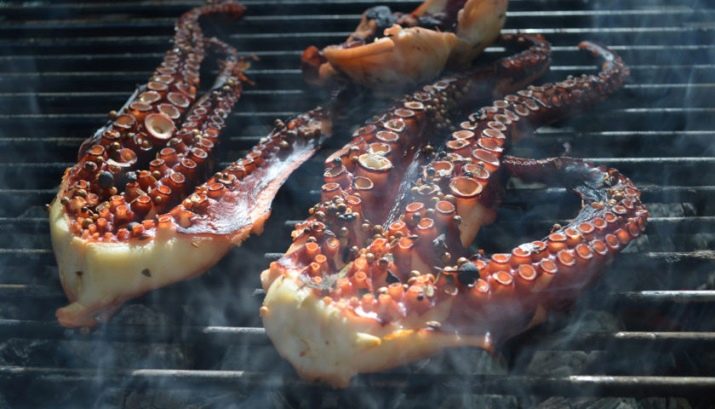
- pilaf with a variety of seafood;
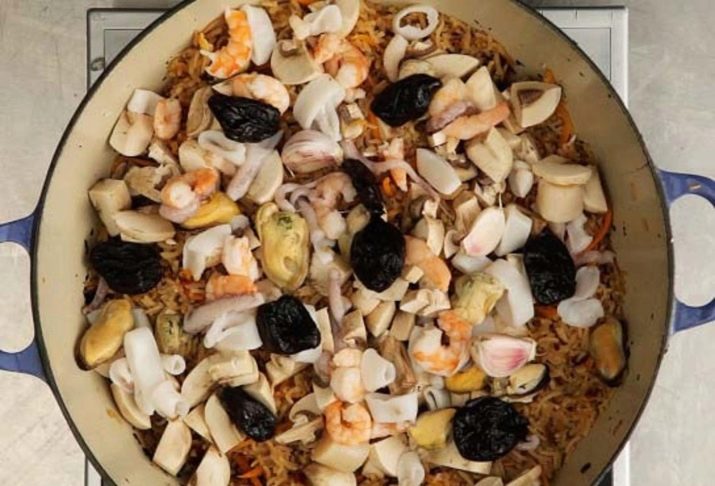
- przheni ligni - squid, often fried in batter;
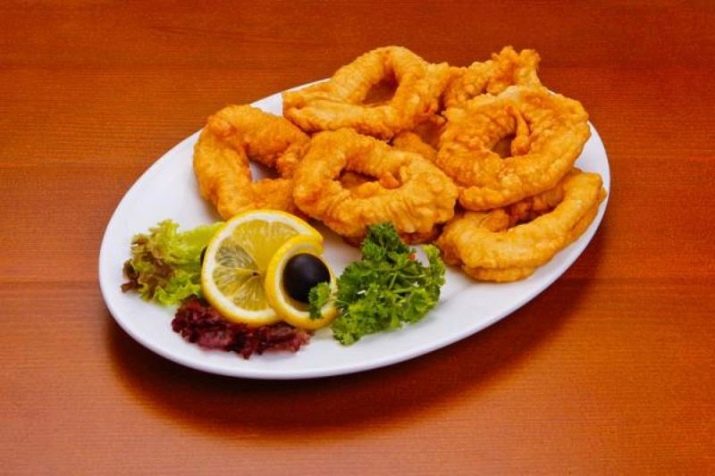
- Ohrid fish - a dish of fish fillets, onions, grated potatoes and cream, which is cooked in pots, served with pickles;
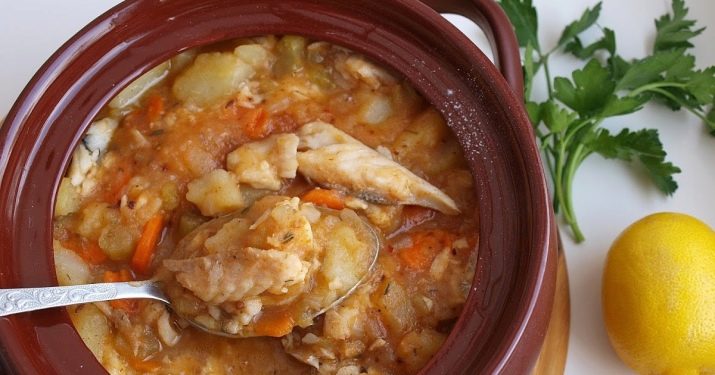
- black risotto with cuttlefish ink;
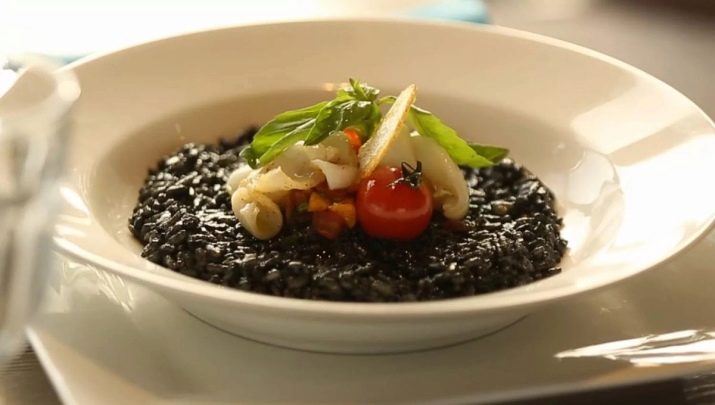
- yaprake - baked carp, drizzled with a lot of cream.
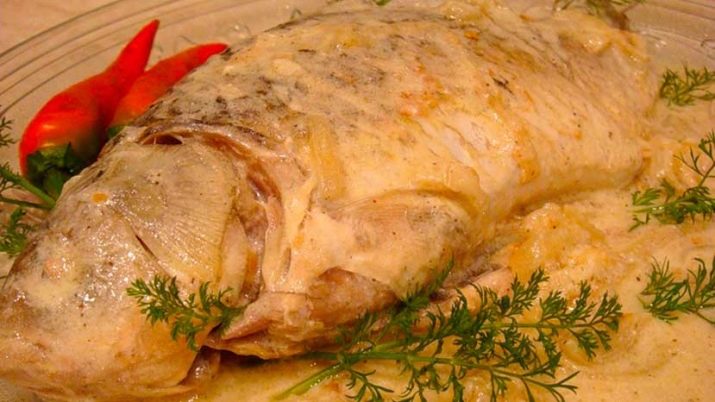
The garnish is served with vegetables cooked in pieces or in a mushy form: boiled Dalmatian, cacamak, baked paprika, gyros.
It should be noted that the cuisine of Montenegro is very similar to the food of other Balkan countries, and therefore the names of the dishes are very similar.
What dairy products are worth trying?
Fermented milk products and local cheeses are another tasty treat to come to Montenegro for.
- Kaymak - fermented baked milk, which at the same time resembles cottage cheese, sour cream and butter. Eat with a spoon or spread on bread like cheese. In restaurant menus, look for this salted product called Cream. It is added to many dishes.
- Njegush cheese Is another visiting card of this place. It is prepared in the original recipe from sheep's milk, but is often mixed with goat or cow's milk. The cheese can be young (reminiscent of less salted feta cheese) and hard, smoked or in olive oil, with pepper or prosciutto, with herbs or berries. It can be an appetizer or an ingredient for salads, burek pies, desserts.
- Lisnati - sheet sweetish cheese, popular in the mountainous Kolasin, made from cow's milk in the morning and evening milking.
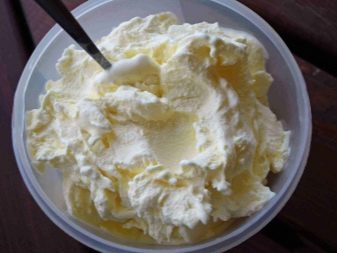
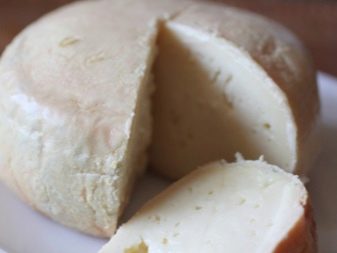
The best desserts
In Montenegro, there is a huge variety of dishes that are eaten at the end of a feast. Of course, now these delicacies can be tasted not only in restaurants, but also bought in order to taste them on the go. Sweets include:
- "Girl's evening" - roll stuffed with raisins, figs and walnuts;
- crofne - donuts, inside of which there may be marmalade, chocolate, custard;
- the executioner - huge pancakes in which jam, sweet cream, hot chocolate are wrapped, but the dish can be savory if the filling is cottage cheese, prosciutto, cheese, ham;
- baklava - the famous oriental sweet with raisins and walnuts;
- tulumba - very sweet pieces of dough by moistening them in syrup or honey.
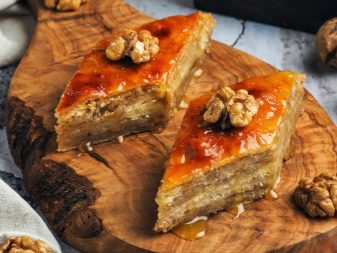
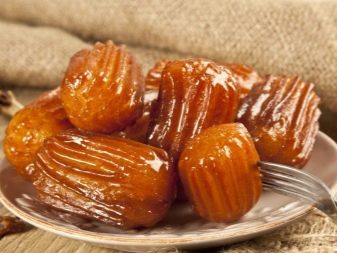
Savory, but no less tasty, cookies include:
- burek - puff pastry stuffed with cheese or meat;
- gibanitsa - cottage cheese pie;
- strukli - cheese (cottage cheese), nuts and plums are wrapped in the dough, baked in the oven or boiled in salted water.
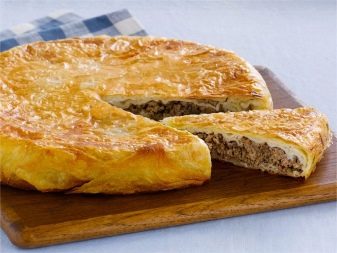
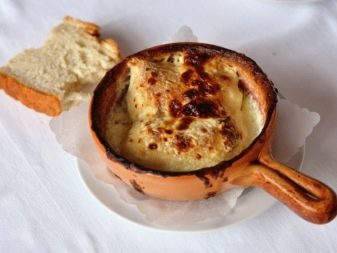
Beverages
For Montenegrins, tea is a medicine made from chamomile or mint, and coffee is a drink that can be drunk around the clock. Another popular drink is lemonade, but it is not mixed with sugar (it will be served separately). If you're lucky, ask the hostess for a wild pomegranate drink that isn't available in stores.
Beer lovers can appreciate the local drink Niksichko, dark, light or with additives, which has recently been exported under the NIK brand.

And, of course, it would be strange if wine and liqueurs were not made in the country of berries and fruits:
- from quince, apples, young spruce twigs, blueberries make amazing liqueurs;
- "House rum" - it is (for some reason) sweet homemade rum;
- "Vranats" and "Krstach" - the best varieties of wines presented in stores;
- rakiya - vodka with fruit (strength - 50 degrees).

It is worth noting that if you do not have to worry about the quality of the products, then drinking tap water in Montenegro is not recommended.
Fruits
Montenegro will delight you with an abundance of local fruits. Fans of pineapples, bananas and coconuts are out of luck - they don't grow here. And here is an incomplete list of what grows and sells here:
- in the spring - kiwi and oranges;
- in June - strawberries, cherries and cherries;
- in July - apricots and peaches, mangoes and apples, pears and plums, melons and green figs, raspberries, blackberries, blueberries, medlar;
- in August - begins to sing figs and pomegranates, watermelons;
- in the fall grapes, tangerines, kumquats, persimmons and zinzula are actively ripening.
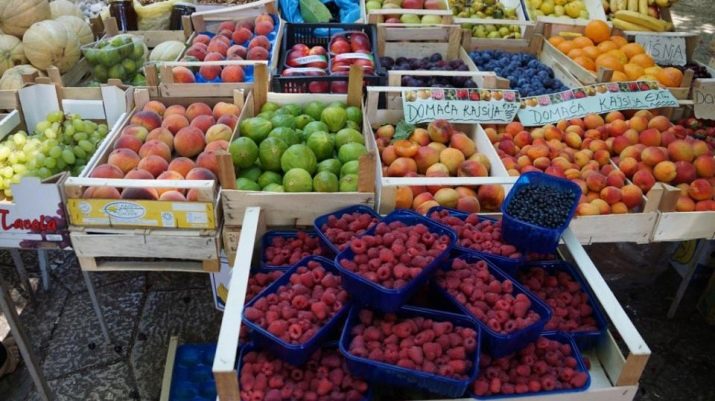
All about the cuisine of Montenegro, see the next video.








